A town located in the Shekhawati region of Rajasthan, Jhunjhunu is famous for its hidden gem brimming with history, culture, and architectural marvels. Places to visit in Jhunjhunu are known for its grand havelis adorned with intricate frescoes, ancient temples, and historic forts, and offers a glimpse into Rajasthan’s rich cultural heritage. Alongside the grandiose of its havelis and forts, Jhunjhunu unveils many forgotten tales. The town is also home to spiritual sites and beautiful gardens, making it a perfect destination for history buffs and art lovers.
Top 15 Places To Visit In Jhunjhunu
Discover to top Jhunjhunu tourist places list to make your Rajasthan trip a memorable one. Here’s top places to visit in Jhunjhunu:
1. Rani Sati Temple
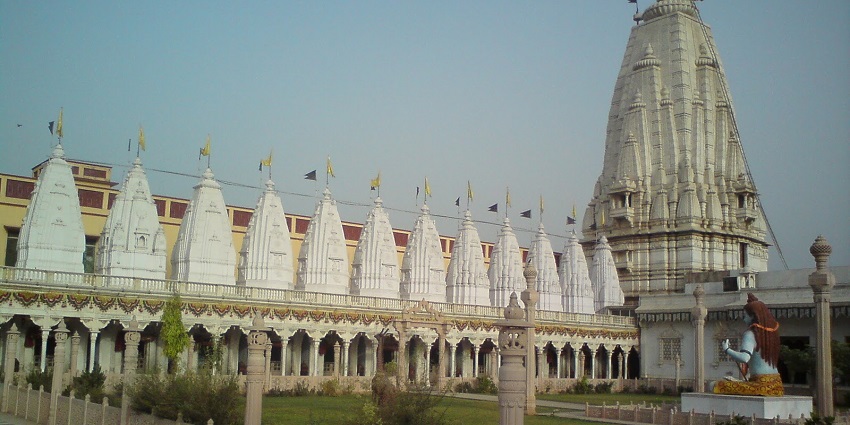
Photo: Death pilani / Wikimedia Commons
Rani Sati Temple is one of the most revered temples in Jhunjhunu, dedicated to Rani Sati, a symbol of female power and courage. The temple complex is adorned with beautiful murals and offers a serene atmosphere for devotees.. Built in the traditional Rajasthani style, the temple’s architecture is as captivating as its spiritual aura. The temple is known for the large number of devotees who gather here, especially during the Bhadrapad Amavasya fair.
Best Time To Visit: October to March
Nearest Airport: Jaipur Airport
Nearest Railway Station: Jhunjhunu Railway Station (2 km)
Ideal Trip Duration: 2 to 3 hours
Suggested Read: Top Temples In Rajasthan To Visit On A Religious Trip
2. Khetri Mahal
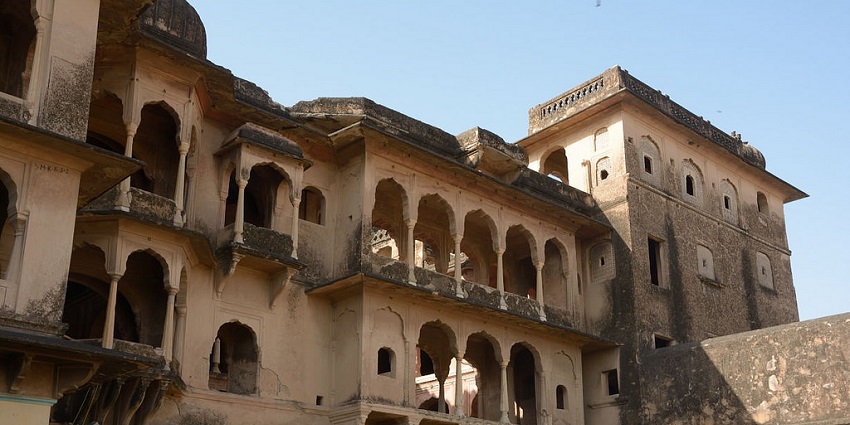
Photo: AKS2000 / Wikimedia Commons
Khetri Mahal, also known as the “Wind Palace,” is one of the iconic Jhunjhunu tourist places. Built in the 18th century by Maharaja Bhopal Singh, this palace is renowned for its open architecture that allows natural air circulation, providing a cool interior environment. The palace is an architectural wonder with its arches and columns, offering a glimpse into the grandeur of Rajasthan’s royal past.
Best Time To Visit: October to March
Nearest Airport: Jaipur Airport
Nearest Railway Station: Jhunjhunu Railway Station (3 km)
Ideal Trip Duration: 1 to 2 hours
3. Modi Haveli
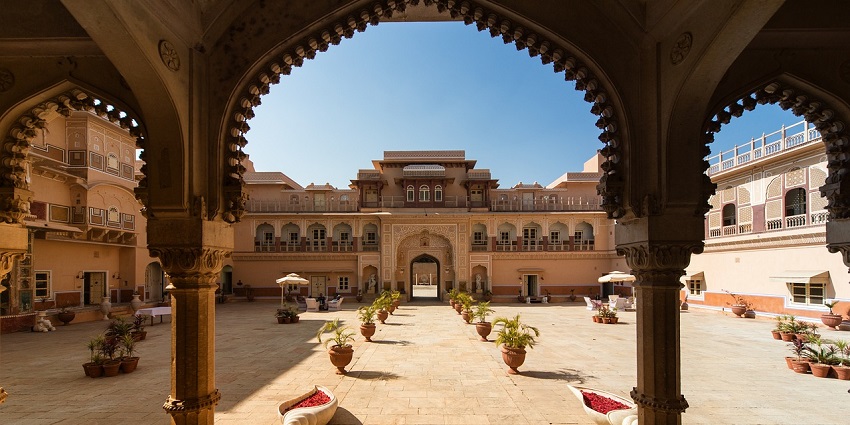
Photo: jpeter2 / Pixabay / Image For Representation Only
Modi Haveli is one of the many intricately designed havelis that Jhunjhunu is famous for. Built in the 19th century, the haveli showcases beautifully painted frescoes that depict scenes from Indian mythology, local legends, and colonial influences. The elaborate carvings and detailed artwork make it a masterpiece of Shekhawati architecture. Each wall of the haveli tells a story through its vibrant colours and intricate designs.
Best Time To Visit: October to March
Nearest Airport: Jaipur Airport
Nearest Railway Station: Jhunjhunu Railway Station (2 km)
Ideal Trip Duration: 1 to 2 hours
Suggested Read: A Journey Through Rajasthan Forts
4. Sethani Ka Johara
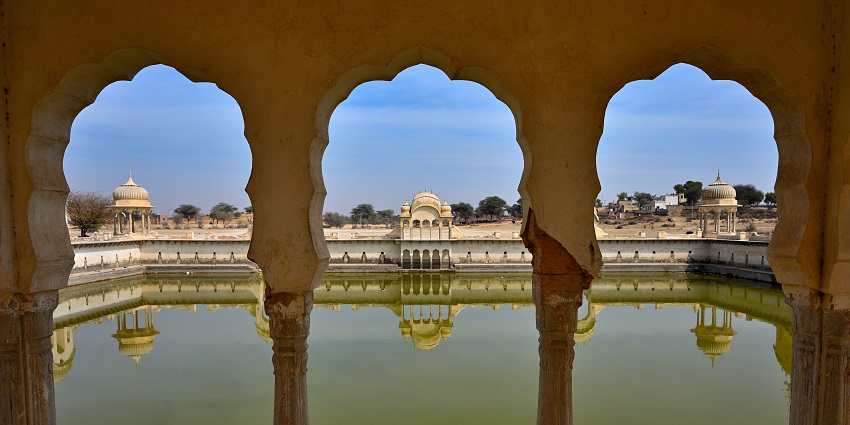
Photo: Sharvarism / Wikimedia Commons
Sethani Ka Johara is a magnificent stepwell located on the outskirts of Jhunjhunu. Built in the 19th century by a wealthy merchant’s widow, it serves as a fine example of traditional Rajasthani water conservation architecture. The stepwell is not only an architectural marvel but also a symbol of the region’s historical practice of water conservation. It is undoubtedly one of the top destinations to visit in Jhunjhunu for those interested in exploring the engineering brilliance of ancient India.
Best Time To Visit: November to February
Nearest Airport: Jaipur Airport
Nearest Railway Station: Jhunjhunu Railway Station (5 km)
Ideal Trip Duration: 1 to 2 hours
5. Dundlod Fort
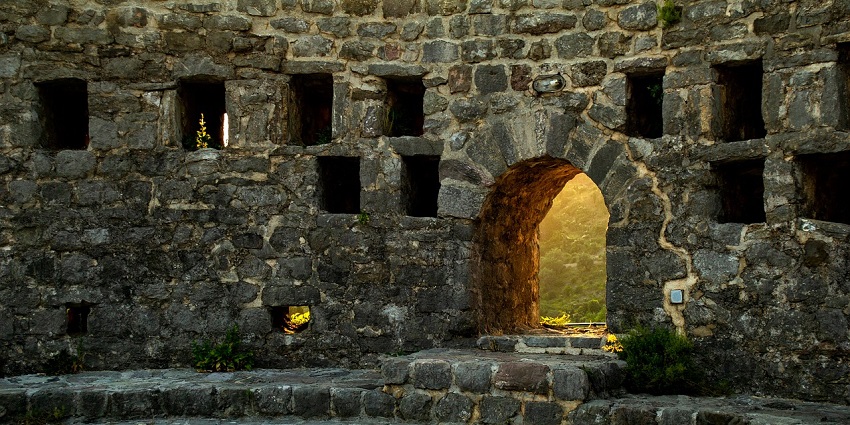
Photo: likalinka / Pixabay / Image For Representation Only
Dundlod Fort, located near Jhunjhunu, is a stunning blend of Rajput and Mughal architectural styles. Built in the 18th century, the fort is known for its ornate walls, intricately designed courtyards, and a rich history. The fort has been converted into a heritage hotel, offering visitors the chance to experience royal Rajasthani hospitality. The interiors are adorned with beautiful frescoes and antique furniture, giving a glimpse into the royal lifestyle of the bygone era.
Best Time To Visit: October to March
Nearest Airport: Jaipur Airport
Nearest Railway Station: Jhunjhunu Railway Station (30 km)
Ideal Trip Duration: 2 to 3 hours
Suggested Read: Places To Visit Near Rajasthan For A Memorable Vacation Experience
6. Aath Havelis
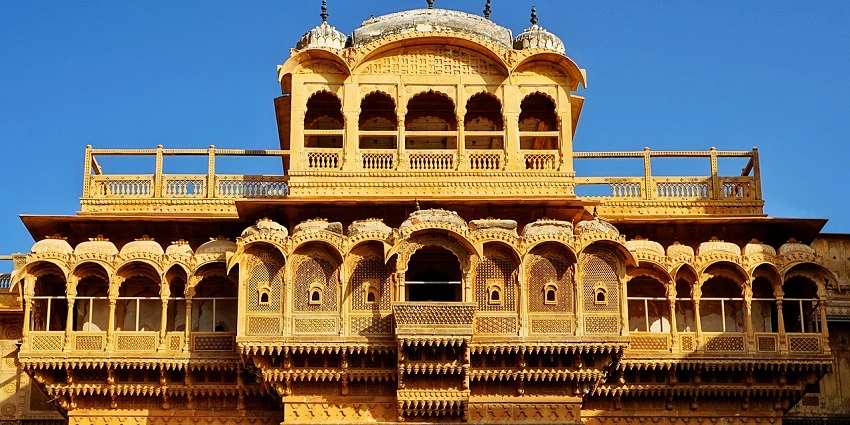
Photo: Glavo / Pixabay / Image For Representation Only
Aath Havelis is a cluster of eight havelis located in the heart of Jhunjhunu, renowned for their intricate frescoes and architectural beauty. These havelis were built by wealthy merchants during the 18th and 19th centuries and showcase the splendour of Shekhawati art. The frescoes depict a variety of themes, including mythology, historical events, and European influences. Aath Havelis is undoubtedly one of the best locations to visit in Jhunjhunu due to its rich cultural and artistic heritage.
Best Time To Visit: October to March
Major Attraction: Frescoes, Shekhawati art
Nearest Airport: Jaipur Airport
Ideal Trip Duration: 2 to 3 hours
7. Raghunathji Mandir
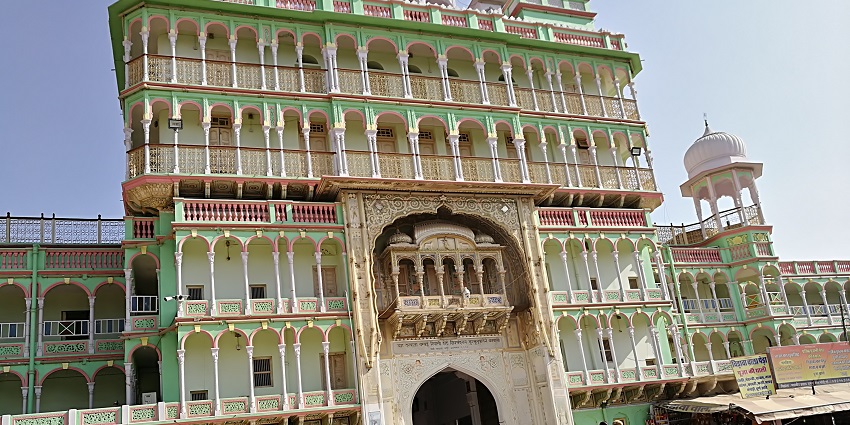
Photo: Seervims / Wikimedia Commons / Image For Representation Only
Raghunathji Mandir is a historic temple dedicated to Lord Rama, located in the heart of Jhunjhunu. Built in the 18th century, the temple is known for its beautiful architecture, intricate carvings, and peaceful atmosphere. The temple is an important religious site for locals and attracts devotees from nearby regions. The interior of the temple is adorned with beautiful paintings and idols, while the exterior boasts traditional Rajasthani carvings.
Best Time To Visit: October to March
Nearest Airport: Jaipur Airport
Nearest Railway Station: Jhunjhunu Railway Station (2 km)
Ideal Trip Duration: 1 to 2 hours
Suggested Read: Top Krishna Temples In Rajasthan
8. Bihari Ji Temple
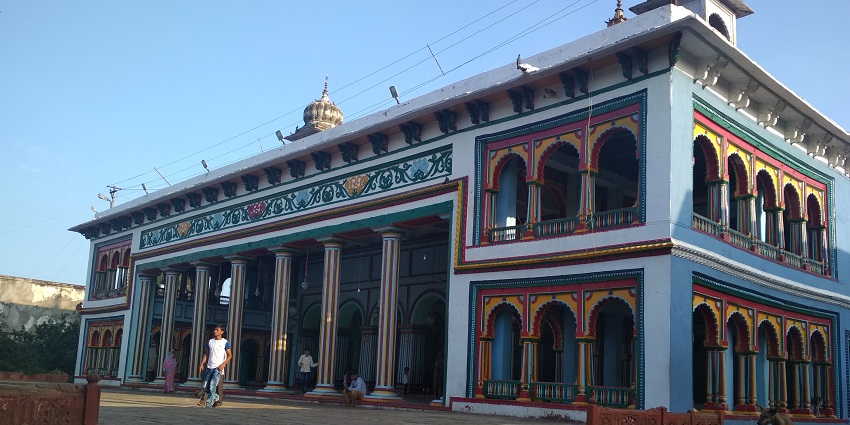
Photo: Haque092 / Wikimedia Commons / Image For Representation Only
Bihari Ji Temple is one of Jhunjhunu’s most revered religious sites, dedicated to Lord Krishna. The temple is known for its splendid Rajasthani architecture, intricate carvings, and vibrant atmosphere. Devotees from all over Rajasthan come to the temple to offer prayers and seek blessings. The temple’s architecture is adorned with beautiful carvings and frescoes, depicting various scenes from Lord Krishna’s life. The serene environment and spiritual aura of the temple make it a perfect place for reflection and one of the best tourist places in Jhunjhunu.
Best Time To Visit: October to March
Nearest Airport: Jaipur Airport
Nearest Railway Station: Jhunjhunu Railway Station (2 km)
Ideal Trip Duration: 1 to 2 hours
9. Mukundgarh Fort
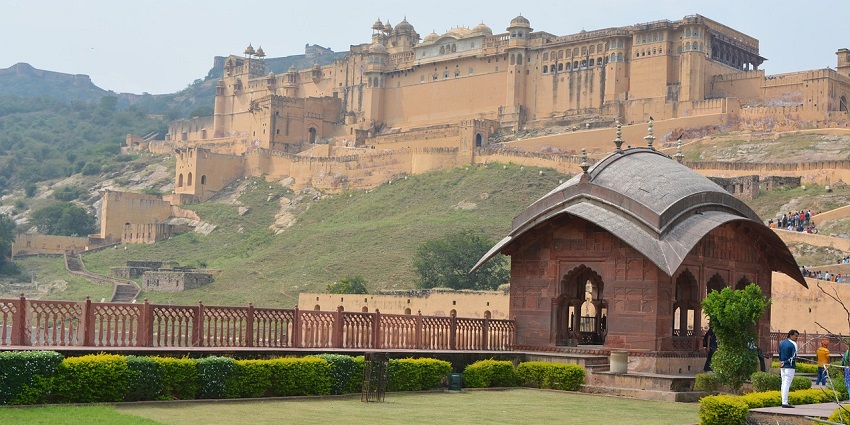
Photo: mkumar123 / Pixabay / Image For Representation Only
Mukundgarh Fort is a magnificent heritage structure located near Jhunjhunu, built in the 18th century. The fort is an architectural marvel, with intricately designed courtyards, stunning frescoes, and a regal charm that reflects the grandeur of Rajasthan’s royal past. Today, Mukundgarh Fort has been converted into a heritage hotel, offering visitors the chance to experience royal hospitality and explore the fort’s historical significance.
Best Time To Visit: October to March
Nearest Airport: Jaipur Airport
Nearest Railway Station: Jhunjhunu Railway Station (25 km)
Ideal Trip Duration: 2 to 3 hours
Suggested Read: Offbeat Places In Rajasthan
10. Kanhaiyalal Bagla Haveli

Photo: safran7 / Pixabay / Image For Representation Only
Kanhaiyalal Bagla Haveli is a beautifully preserved haveli located in Jhunjhunu, known for its elaborate frescoes and stunning architecture. The haveli was built by a wealthy merchant family in the 19th century and showcases the artistic brilliance of the Shekhawati region. The frescoes depict scenes from Indian mythology, local folklore, and everyday life during the British era. The intricate carvings and vibrant colours make this haveli a must-visit.
Best Time To Visit: October to March
Nearest Airport: Jaipur Airport
Nearest Railway Station: Jhunjhunu Railway Station (2 km)
Ideal Trip Duration: 1 to 2 hours
11. Mohanlal Ishwardas Modi Haveli
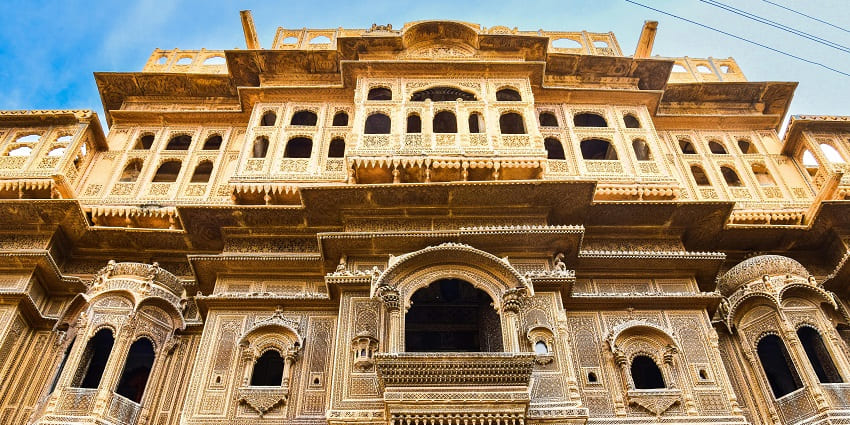
Photo: AXP Photography / Pexels / Image For Representation Only
Mohanlal Ishwardas Modi Haveli is an example of traditional Rajasthani architecture, showcasing intricate frescoes and wall paintings. Located in Jhunjhunu, this haveli is a must-visit for anyone interested in heritage buildings and historical artistry. The vivid murals depict mythological stories, royal processions, and daily life, capturing the essence of a bygone era. Though not always open to the public, a walk around the area offers a fascinating glimpse into the region’s artistic and cultural past.
Best Time To Visit: October to March
Nearest Airport: Jaipur International Airport
Nearest Railway Station: Jhunjhunu Railway Station ( 2 km)
Ideal Trip Duration: 1 – 2 hours
Suggested Read: Places To Visit In Rajasthan
12. Badalgarh Fort
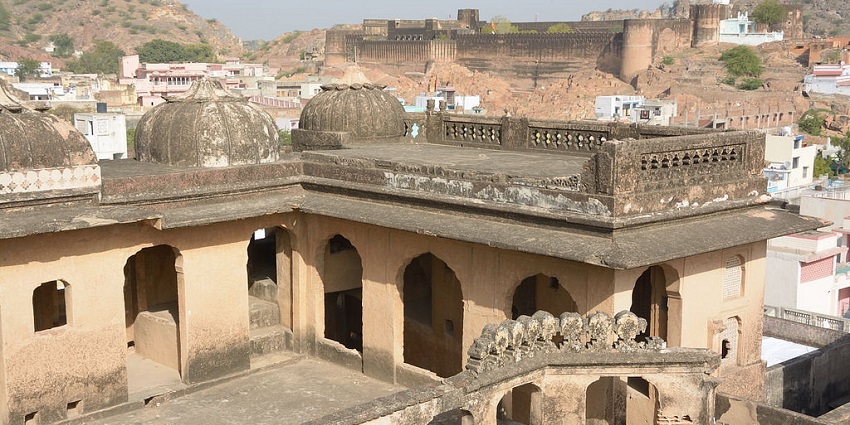
Photo: AKS2000 / Wikimedia Commons
Places for Jhunjhunu trip in Rajasthan, Badalgarh Fort is one of them, perched atop a hill. The fort offers panoramic views of Jhunjhunu and stands as a silent witness to Rajasthan’s regal past. Built in the 17th century, this fort was used as a defensive structure and later as a royal residence. Its sturdy walls and ageing bastions still hold charm for history buffs and architecture enthusiasts. While the fort has seen better days, it retains a rustic grandeur, making it an interesting spot for exploration and photography in the region.
Best Time To Visit: October to March
Nearest Airport: Jaipur International Airport
Nearest Railway Station: Jhunjhunu Railway Station (3 km)
Ideal Trip Duration: 1 – 2 hours
13. Lohargal
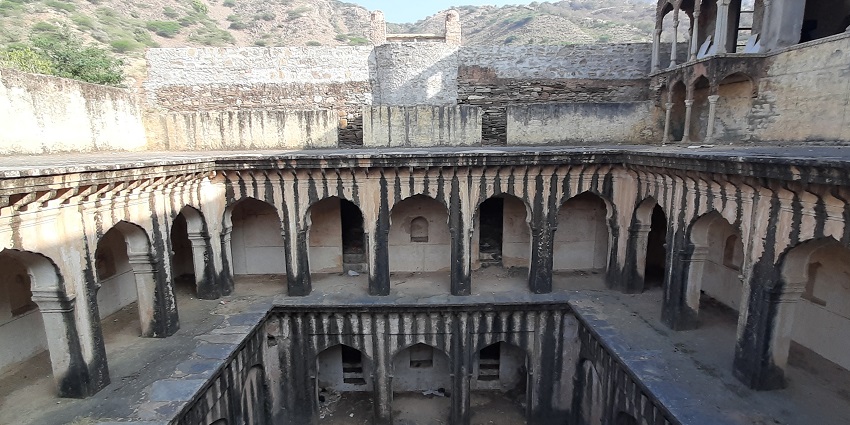
Photo: vksdreams / Shutterstock
Lohargal, nestled in the Aravalli hills, is a sacred pilgrimage site renowned for its natural springs and religious significance. The main attraction here is the Surya Kund, believed to have mythological ties with the Mahabharata. Devotees come to bathe in its waters, hoping for spiritual cleansing. The area is dotted with ancient temples, serene surroundings, and local legends. A visit to Lohargal offers a peaceful escape and a unique insight into the spiritual life and folklore of Rajasthan.
Best Time To Visit: October to February
Nearest Airport: Jaipur International Airport
Nearest Railway Station: Jhunjhunu Railway Station (55 km)
Ideal Trip Duration: Half day to full day
Suggested Read: Hill Fort Kesroli
14. Shree Khemi Sati Temple
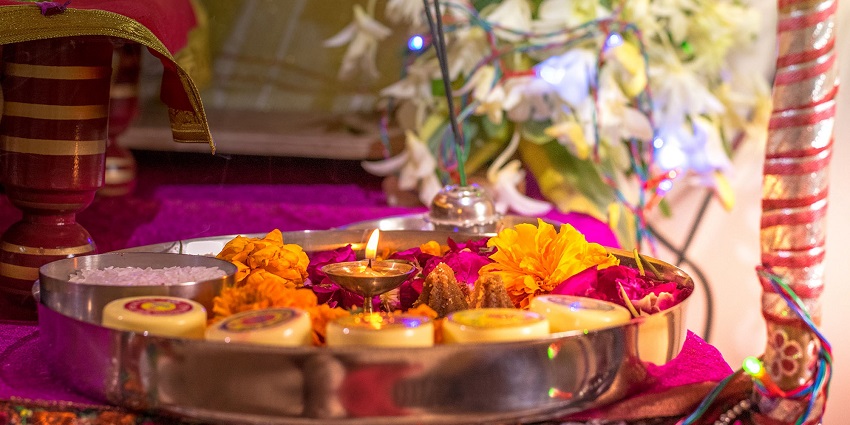
Photo: suketdedhia / Wikimedia Commons / Image For Representation Only
Shree Khemi Sati Temple is a revered religious site dedicated to Sati Mata, attracting devotees from Jhunjhunu and beyond. The temple is known for its peaceful ambiance and architectural simplicity, reflecting local spiritual beliefs. It plays a central role during religious gatherings and festivals, offering a space for devotion and reflection. Visitors often come here to seek blessings and enjoy the serene setting. The temple’s cultural significance makes it one of the top places to visit in Jhunjhunu for couples and a meaningful stop for those exploring the region’s spiritual heritage.
Best Time To Visit: October to March
Nearest Airport: Jaipur International Airport
Nearest Railway Station: Jhunjhunu Railway Station (2 km)
Ideal Trip Duration: 30 minutes to 1 hour
15. Sone Chandi Ki Haveli
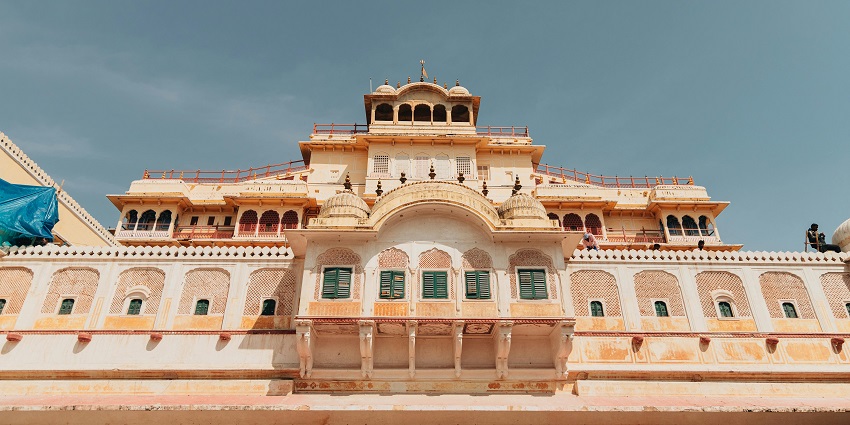
Photo: urtimud.89 / Pexels / Image For Representation Only
Sone Chandi Ki Haveli, translating to the Mansion of Gold and Silver, is famed for its richly decorated interiors and artistic heritage. Located in the heart of Jhunjhunu, this haveli features stunning frescoes embellished with gold and silver leaf, showcasing scenes from mythology and royal life. It exemplifies the opulence of the merchant class that once thrived in the Shekhawati region. Though privately owned, it remains a fascinating landmark for admirers of traditional Rajasthani architecture and artistry.
Best Time To Visit: October to March
Nearest Airport: Jaipur International Airport
Nearest Railway Station: Jhunjhunu Railway Station (2 km)
Ideal Trip Duration: 1 – 2 hours
Suggested Read: Things To Do In Rajasthan
Places to visit in Jhunjhunu offer a rich cultural and historical experience with its grand havelis, ancient temples, and imposing forts. Whether you’re exploring the region’s famous frescoes or delving into its royal past, Jhunjhunu provides a glimpse into the architectural and artistic splendour of Rajasthan. Ready to discover the hidden gems of Jhunjhunu? Book your trip with TripXL and immerse yourself in the history of this remarkable destination.
Cover Photo: Nehabajiya / WIkimedia Commons


 WhatsApp
WhatsApp
 Twitter
Twitter









